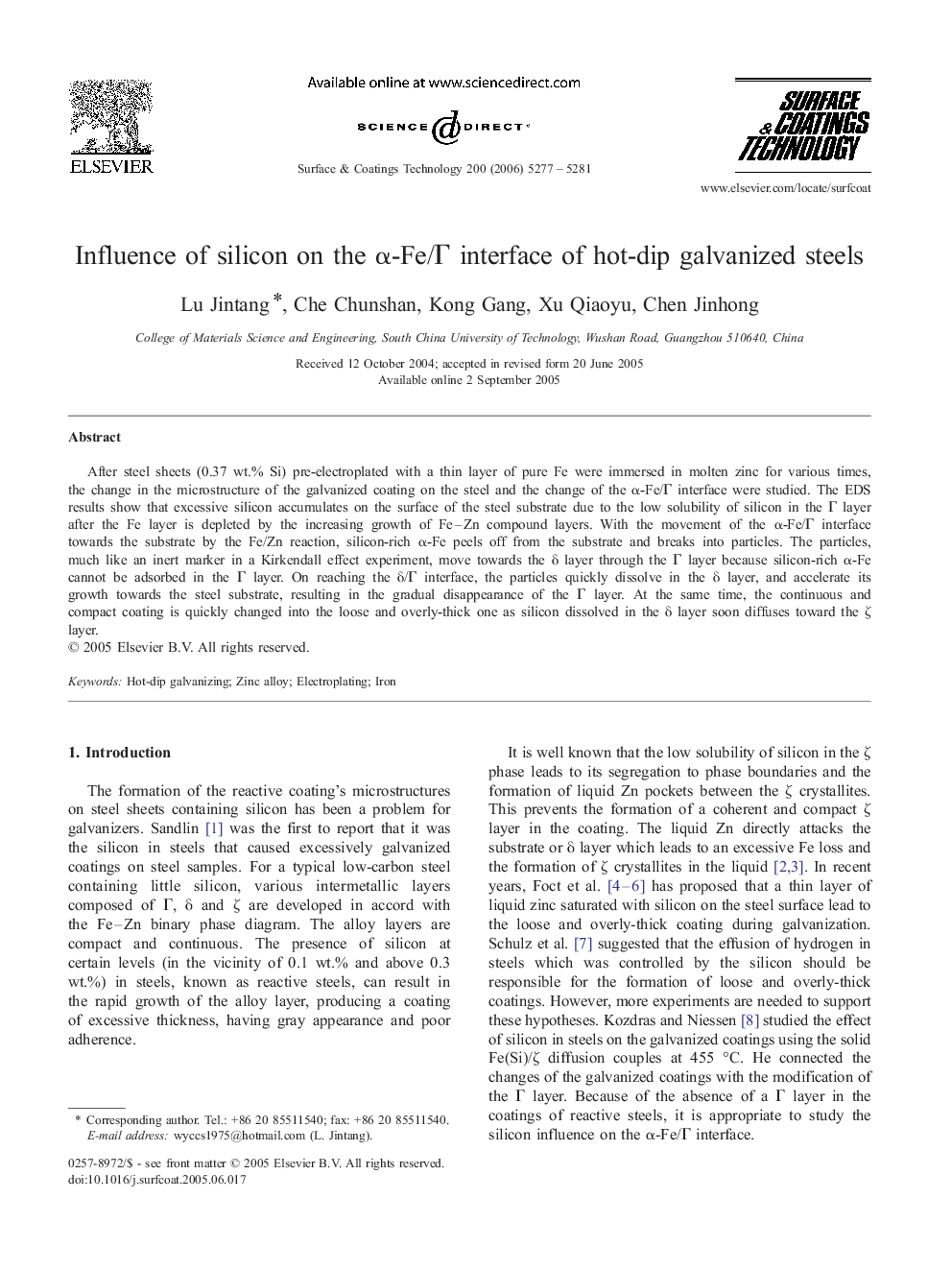| Article ID | Journal | Published Year | Pages | File Type |
|---|---|---|---|---|
| 1662764 | Surface and Coatings Technology | 2006 | 5 Pages |
After steel sheets (0.37 wt.% Si) pre-electroplated with a thin layer of pure Fe were immersed in molten zinc for various times, the change in the microstructure of the galvanized coating on the steel and the change of the α-Fe/Γ interface were studied. The EDS results show that excessive silicon accumulates on the surface of the steel substrate due to the low solubility of silicon in the Γ layer after the Fe layer is depleted by the increasing growth of Fe–Zn compound layers. With the movement of the α-Fe/Γ interface towards the substrate by the Fe/Zn reaction, silicon-rich α-Fe peels off from the substrate and breaks into particles. The particles, much like an inert marker in a Kirkendall effect experiment, move towards the δ layer through the Γ layer because silicon-rich α-Fe cannot be adsorbed in the Γ layer. On reaching the δ/Γ interface, the particles quickly dissolve in the δ layer, and accelerate its growth towards the steel substrate, resulting in the gradual disappearance of the Γ layer. At the same time, the continuous and compact coating is quickly changed into the loose and overly-thick one as silicon dissolved in the δ layer soon diffuses toward the ζ layer.
